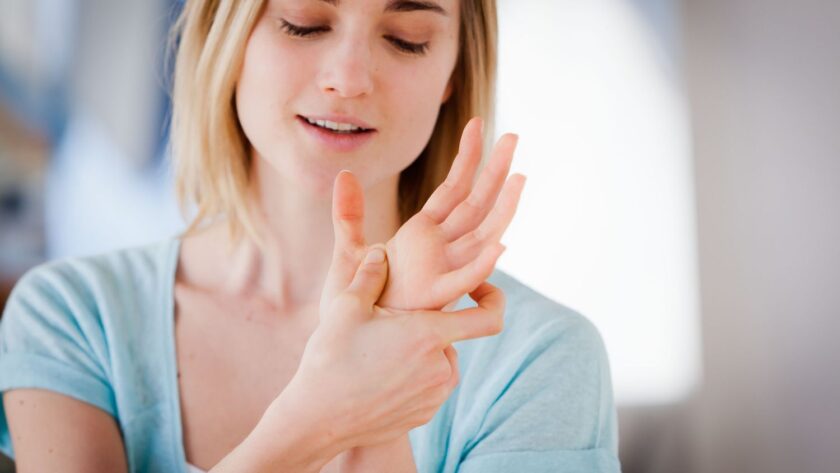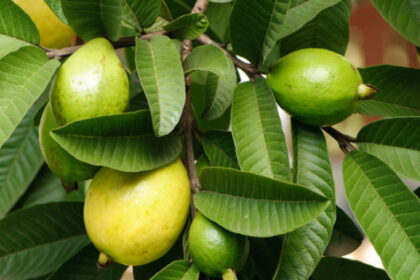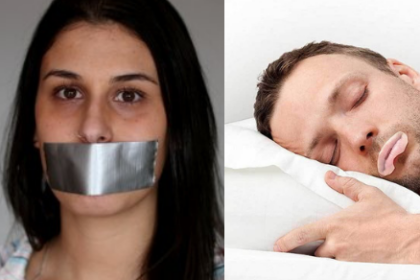Acupressure has been around throughout history, and while most of humanity took a turn away from the holistic healing methods, and chemical medicine took over during the 1900’s, it seems now that many more people are seeking alternative methods to promote healing and restore balance within the body.
One such practice is acupressure. No, not the one with the needles. This is a light massaging technique to certain pressure points all over your body to relieve all types of ailements such as;
- Headache, Migraine, Neck, and Shoulder Pain
- Focus, and Concentration
- Numbness in the Arm, Hands and Fingertips
- Anxiety, Stress, and Depression
- Improve a Weakened Immune System
According to a Study In The World Of Psychiatry, The evidence of acupressure for mild-to-moderate depressive symptoms was significant. Results of ten studies with individuals aged 20-64 showed acupressure significantly reduced depression levels compared to no treatment, and some chemical medicines.
The belief behind acupressure is that the human body possesses an innate ability to heal itself. With history dating back thousands of years, acupressure has emerged back on the scene as an easy, non-invasive tool that anyone can start utilizing, and I highly recommend it!
What Is Acupressure?
Acupressure, an ancient therapeutic modality, revolves around the application of gentle pressure to specific points on the body, known as acupoints. These acupoints are believed to correspond with vital energy pathways called meridians, which flow throughout the body, forming an intricate network.
By stimulating these points, acupressure aims to restore the harmonious flow of energy, relieving pain, promoting relaxation, and enhancing overall well-being.
Originating in China over 5,000 years ago, acupressure draws its roots from the fundamental principles of Traditional Chinese Medicine (TCM).
It shares some traits with its sister practice, acupuncture, but it does not involve the use of needles. Instead, acupressure relies on the power of human touch, making it an accessible and non-invasive healing technique.
Over the centuries, acupressure has expanded beyond the borders of China, gaining popularity in various cultures worldwide. From Japan’s shiatsu and Korea’s chimsul to India’s marma therapy and Egypt’s reflexology, different regions have developed their own unique adaptations of acupressure, highlighting its clear benefits.
Today, in a world where modern medicine often focuses solely on symptom management, acupressure can stand as a reminder of the intricate connections between mind, body, and spirit. Its holistic approach embraces the concept of balance, recognizing that true healing encompasses more than just physical relief.

How Does Acupressure Work?
Acupressure aims to promote the body’s natural healing abilities and restore balance using ones fingers to press on certain areas of the body. By applying gentle pressure to specific points known as acupoints, acupressure stimulates the flow of vital energy, also referred to as Qi (pronounced “chee”).
The primary goal of acupressure is to restore the harmonious flow of Qi throughout the body’s meridians, or energy pathways. When Qi becomes blocked or imbalanced, it is believed to result in physical discomfort, pain, or illness. By applying targeted pressure to acupoints, acupressure aims to clear blockages, restore the smooth flow of energy, and alleviate symptoms.
Acupressure is known to offer a wide range of potential benefits. Some of its commonly reported effects include:
- Pain relief: Acupressure has been used to manage various types of pain, including headaches, back pain, menstrual cramps, and joint discomfort. By stimulating acupoints, acupressure can help release tension, reduce inflammation, and promote the body’s natural pain-relieving mechanisms.
- Stress reduction: Acupressure is renowned for its ability to induce relaxation and reduce stress. The gentle pressure on specific acupoints can help calm the nervous system, lower cortisol levels, and promote a sense of tranquility and well-being.
- Improved circulation: The stimulation of acupoints through acupressure can enhance blood circulation, aiding in the delivery of oxygen and nutrients to the body’s tissues. This improved circulation can support overall health and vitality.
- Enhanced energy and vitality: By promoting the smooth flow of Qi, acupressure can help revitalize and balance the body’s energy, leading to increased vitality, improved mood, and a greater sense of overall well-being.
- Emotional balance: Acupressure is believed to have a positive impact on emotional health. It can help release emotional tension, reduce anxiety, and promote a sense of emotional balance and inner harmony.
Acupressure For Stress, Anxiety And Depression
Acupressure promotes relaxation, balances energy, and supports emotional well-being, so it’s no wonder that it helps with the things listed above. While it is not a standalone treatment for these conditions, it can be a complementary practice that works in conjunction with other approaches to promote holistic healing.
Acupressure stimulates specific acupoints that target the nervous system. By applying gentle pressure to these points, acupressure promotes the release of endorphins, which are natural “feel-good” chemicals that induce relaxation and reduce stress levels.
Targeting acupoints associated with anxiety, such as the Pericardium 6 (P6) point located on the inner wrist, acupressure can help calm the mind, reduce racing thoughts, and induce a sense of calmness.
Certain acupoints, such as the Governing Vessel 24.5 (GV 24.5) point located between the eyebrows, are believed to influence the release of neurotransmitters associated with mood regulation. By stimulating these points, acupressure may help improve emotional balance and uplift the spirits.
Acupressure can also aid in promoting restful sleep, which is essential for managing stress, anxiety, and depression. By targeting acupoints that support relaxation, such as the Anmian point located behind the ear, acupressure can help calm the mind, ease insomnia, and enhance overall sleep quality.
The act of performing acupressure techniques on oneself promotes self-care and mindfulness, allowing individuals to cultivate a deeper connection with their bodies and emotions.
Try These DIY Acupressure Massage Techniques For Stress & Anxiety
Acupressure massage therapy is an easy and effective treatment for when you begin to feel stress and anxiety creeping in! Try stimulating the following acupressure points for some at-home anxiety and stress reduction:
Third Eye Point

This point is located in the center of your forehead between your eyebrows. Sit back in a comfortable position and close your eyes. With either your thumb or index finger, apply gentle pressure in a circular motion. Stimulate this point as needed.
One Hundred Meeting Point / Bai Hui

Find this acupressure point by locating the exact center on the top of your head. Gently massage this point, working your way up to longer massages. This point also helps to alleviate dizziness, headache and clenched jaw.
Heavenly Gate Point / Shen Men
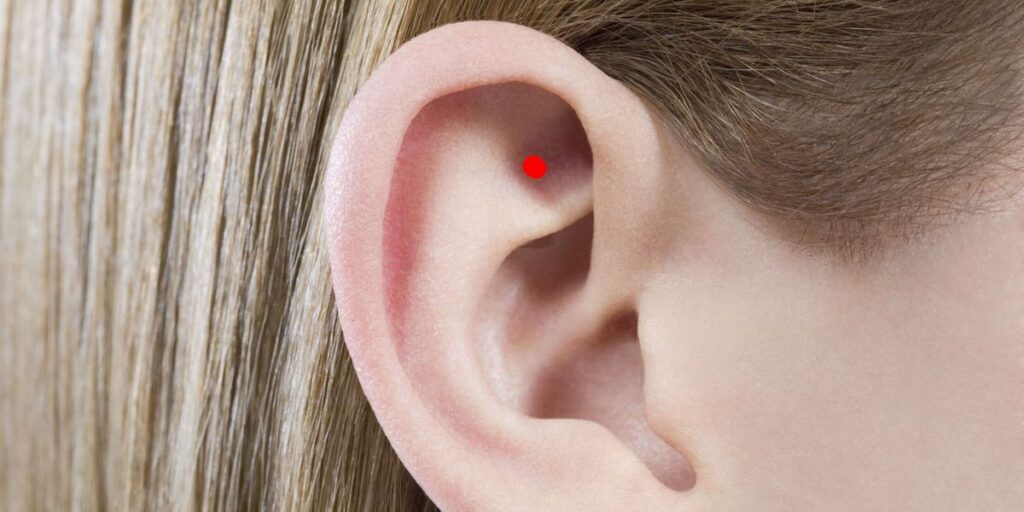
Find the top cartilages of your ear and then slide your finger down into the triangle-like hollow just below. The tip of that hollow is your heavenly gate point. Apply firm but gentle pressure in a circular motion for about two minutes.
Shoulder Well Point / Jian Jing

This point is located in each shoulder muscle on either side of your neck. To find it, pinch your shoulder muscle with your middle finger and thumb. Apply gently, firm pressure before releasing the pinch and massaging the point. *Do not use this point if you are pregnant, as it can induce labor.
Great Abyss / Tai Yuan
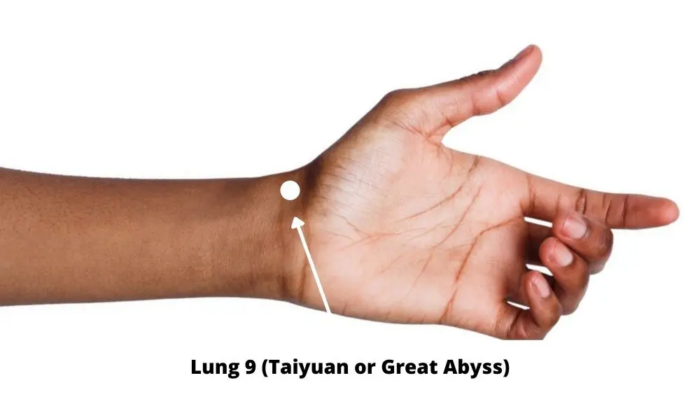
Turn your hand palm up and slightly spread your fingers. At the side of the wrist nearest the thumb, you should see a slight indent near the edge of the wrist. Gently massage this point in a slow, circular motion for about a minute before repeating on the other wrist. Stimulating this point helps to relieve some physical signs of anxiety such as heart palpitations.
Anxiety and Stress Reduction Techniques
Never take for granted your mental well-being and work to improve it every day! Try incorporating the following into your day-to-day life to help you get the most out of life and increase your positive energies.
Foster Good Relationships
The people you surround yourself with are important and making connections, in general, is good for your mental wellbeing. Within healthy relationships, you are able to share positive experiences, provide emotional support, and receive support and love from others.
- Set aside family or friend time.
- Plan a day out or a video call with someone you care about but maybe haven’t seen in a while
- Try switching off the TV or games to talk with your kids or family (a phone call counts too!)
Be Kind
Acts of kindness affect us in the best of ways. You feel a positive sense of reward from giving to or supporting others. Your self-worth increases and good connections are created. The best part is that being kind comes in all shapes and sizes.
- Say thank you to someone, anyone!
- Go out of your way to surprise someone with a small gift or gesture.
- Ask your family and friends how they are and really listen to their answers.
- Volunteer in your community if you can.
Learn Something New
Your brain likes being kept active, plus it’s a great way to build a new sense of purpose and boost your self-esteem. Start small!
- Cook something new.
- Work on a DIY project.
- Check out a tutorial on Youtube for some inspiration and guidance!
Be Active
I know this one is a broken record, but your body was made to move! Being physical causes chemical changes in your mood, helping to positively influence you.
- Try an at-home workout routine.
- Go for walks in your neighborhood.
- Be more conscious of the times you are sitting for long periods of time and be sure to get up and move around.
Try Acupressure For A Boost To Your Mental Health

As the popularity of holistic healing continues to rise, DIY acupressure has emerged as a valuable self-care tool for individuals seeking natural ways to alleviate stress, anxiety, and depression.
Remember, while these techniques offer a starting point, acupressure is a deeply individual practice. Each person’s acupoints and needs may differ, so it’s essential to listen to your body and adapt the techniques accordingly.
If you’re new to acupressure, it’s a good idea to consult reputable resources, books, or seek guidance from a qualified acupressure practitioner to ensure you are targeting the right acupoints and applying appropriate pressure.
Incorporating DIY acupressure into your wellness routine is a step toward self-empowerment, encouraging you to take an active role in your health and well-being. Remember that acupressure is just one piece of the puzzle, and it works best when combined with a holistic approach that includes proper nutrition, exercise, rest, and seeking professional help when needed.
Whether you’re using acupressure to relieve stress, calm anxiety, or uplift your spirits, these simple techniques can serve as anchors amidst life’s challenges.
